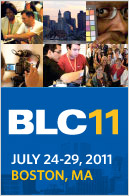Reflection on “Design Matters” by Dean Shareski (K12Online07)
Reflection on “Design Matters” by Dean Shareski (K12Online07)
Though I originally watched this excellent presentation by Dean way back when the conference started, I’ve just re-watched it and am finally getting around to reflecting on it. I decided to build my final project around what I learned in Dean’s presentation. You can read my reflection on that process here.
First, I’d like to thank Dean for including my blog site as an example in the presentation, though I feel like I have so much to learn about Design!
I was drawn to this presentation due to reading A Whole New Mind by Daniel Pink and agree with Dean that design is not just “an add-on” but needs to be integral to the construction of ideas, work, classrooms. It was great to hear from Clarence Fischer in the video and hear him refer to his classrooms as “Studios” and how that word represents an entirely different view of what we’ve traditionally defined classrooms as.
I’ve extended that idea to thinking a lot about my own classroom this year: the “Computer Lab.” I like the name “Lab” because that brings to mind a “laboratory” where experiments can take place, where things can be tried out, where mistakes can be made and ideas refined. However, when you look at the setup of the room, it communicates that students stay on their own computers, working in their own areas. I’ve reshaped many of my lessons to have students working in groups, moving around the room, having a more “fluid” process of discovery, rather than sitting in one seat the entire time. There are many changes that I envision for a computer lab to make it more adaptable to collaborative work. Though I can’t make these changes overnight, I would like to work towards an evolution of a “Computer Studio”, putting to rest the traditional makeup of the computer lab.
One of the most important parts of Dean’s presentation is the examination of planning before students even begin working with the tools. Dean says that it’s “wasted time” to skip this step and I agree. This planning needs to incorporate media literacy instruction. Rather than just handing a camera to a student, we need to examine the power and purposes of imagery and teach the basic strategies for successful images. Far too often we skip this part, assuming that students inherently understand what to do with the camera and why to include it as a tool in their communication.
Technorati Tags: bitbybit, bobsprankle, deanshareski, k12online07









0 comments
Kick things off by filling out the form below.
Leave a Comment